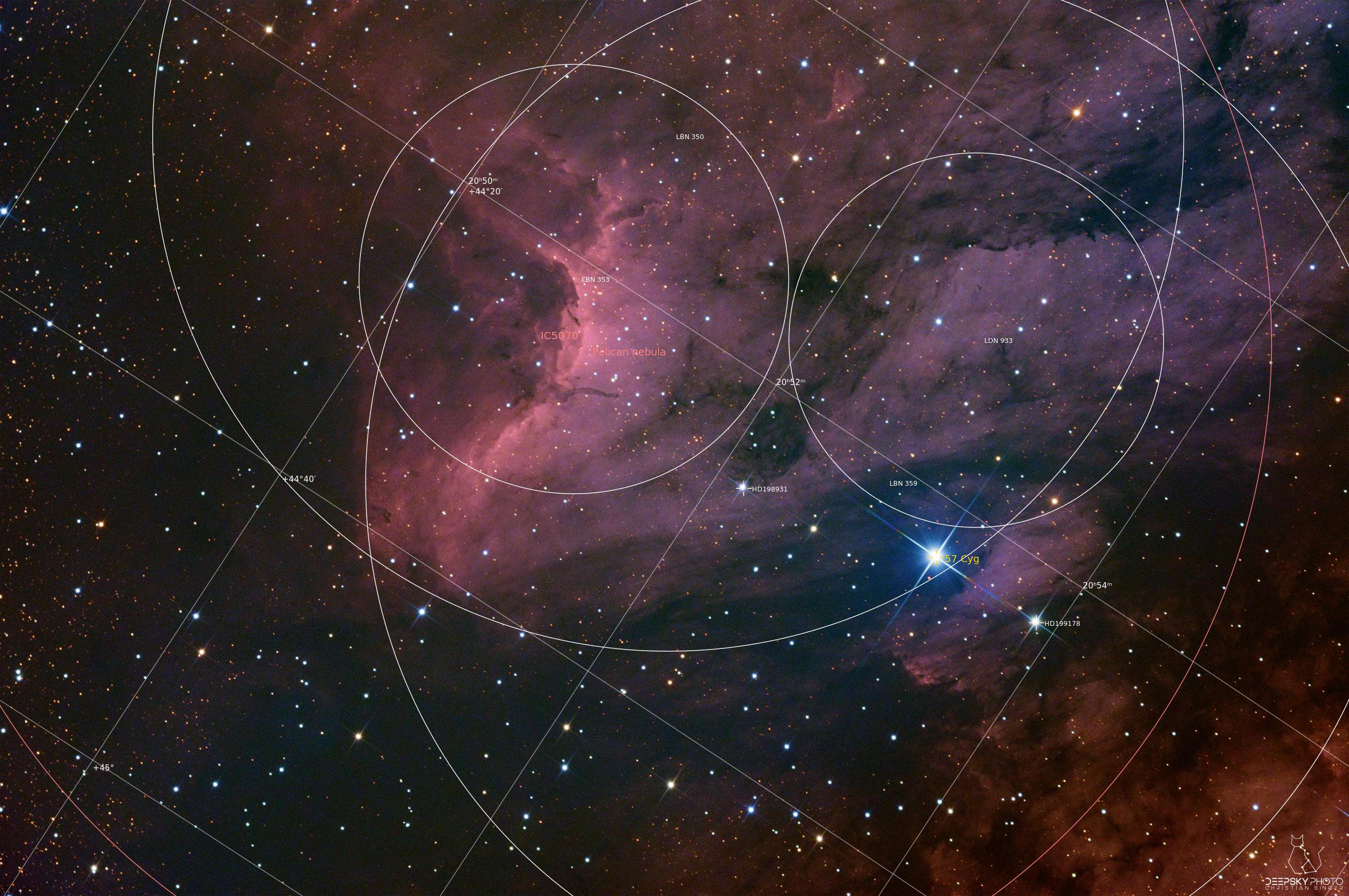Emission Nebula in constellation “Cygnus”
Project #1
IC5070 – Object Description
The Pelican Nebula (also known as IC 5070 and IC 5067) is a H II region associated with the North America Nebula in the constellation Cygnus. The gaseous contortions of this emission nebula bear a resemblance to a pelican, giving rise to its name.
The Pelican Nebula is located nearby first magnitude star Deneb, and is divided from its more prominent neighbour, the North America Nebula, by a foreground molecular cloud filled with dark dust. Both are part of the larger H II region of Westerhout 40. The Pelican is much studied because it has a particularly active mix of star formation and evolving gas clouds. The light from young energetic stars is slowly transforming cold gas to hot and causing an ionization front gradually to advance outward. Particularly dense filaments of cold gas are seen to still remain, and among these are found two jets emitted from the Herbig–Haro object 555.
Millions of years from now this nebula might no longer be known as the Pelican, as the balance and placement of stars and gas will leave something that appears completely different. (Source: Wikipedia)
IC5070 – Project Publications
Please find all project-related images for this revision below.
IC5070 – Project Details
Please find all project-related details for this revision below.
| Astrobin Link | IC5070 / Pelican Nebula |
| Astronomical Object | IC5070 / IC5067 |
| Distance to Earth | 1.800 light years |
| Size / Diameter | 50′ x 60′ (arcmins) |
| Date(s) of Photography | November 2022 |
| Exposure Details | Clearglass: 50 x 120″ (1h 40min) Dual NB: 70 x 180″ (3h 30min) Total: 5h 10min |
| Calibration | FlatsA "flat frame" is shot against a bright surface and contains vignetting and all the "bad" things (e.g. dust particles) that block/disturb your light train. The combination/stack of multiple flat frames is called a "Master Flat". More: 50 BIAS: 50 Master-Dark |
| Equipment | Mount: Skywatcher EQ6-R PRO (the old w/o USB-interface) Telescope: Skywatcher 200PDS Newton (200mm/1000mm, f/5) Camera: Touptek DeepSky Pro 2600c (Gain: 100, Offset: 100) Clearglass Filter: Baader Clearglass 2″ Dual Narrowband Filter: Optolong L-eXtreme 2″ Corrector: Pál Gyulai GPU Komakorrektor Guiding(Auto-)Guiding is essential in astrophotography, as an un-guided mount/telescope will produce blurry images as the stars / the deepsky object will drift away. This is heavily dependent on the exposure time, so for long exposures you want to make sure to have a perfectly set up auto-guiding. More: ZWO ASI120MM + 50mm Helical GuideScope |
| Software | Observatory Automation: Sequence Generator Pro Guiding(Auto-)Guiding is essential in astrophotography, as an un-guided mount/telescope will produce blurry images as the stars / the deepsky object will drift away. This is heavily dependent on the exposure time, so for long exposures you want to make sure to have a perfectly set up auto-guiding. More: PHD Post-Processing: Astro Pixel Processor + PixInsight + Photoshop |


